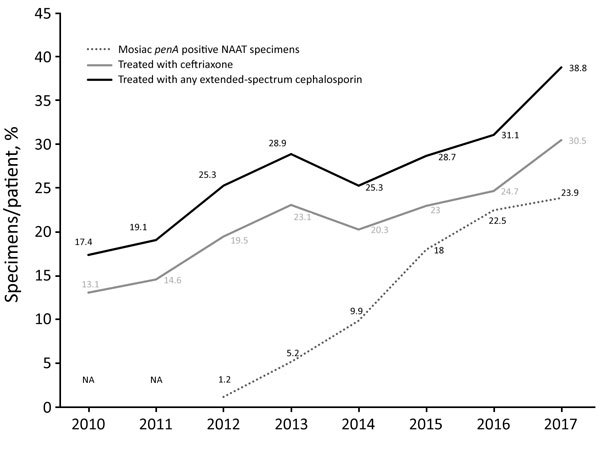Volume 25, Number 3—March 2019
Research
Emergence and Spread of Cephalosporin-Resistant Neisseria gonorrhoeae with Mosaic penA Alleles, South Korea, 2012–2017
Figure 2

Figure 2. Percentages of Neisseria gonorrhoeae mosaic penA in NAAT specimens and gonorrhea patients treated with ceftriaxone or any extended-spectrum cephalosporin, South Korea, 2010–2017. Data for antimicrobial drug use were acquired from the Korea Health Insurance Review and Assessment Service in South Korea. In 2010 and 2011, no NAAT samples were available for screening of mosaic penA alleles. NA, not assessed; NAAT, nucleic acid amplification test.
1Joint senior authors.
Page created: February 19, 2019
Page updated: February 19, 2019
Page reviewed: February 19, 2019
The conclusions, findings, and opinions expressed by authors contributing to this journal do not necessarily reflect the official position of the U.S. Department of Health and Human Services, the Public Health Service, the Centers for Disease Control and Prevention, or the authors' affiliated institutions. Use of trade names is for identification only and does not imply endorsement by any of the groups named above.